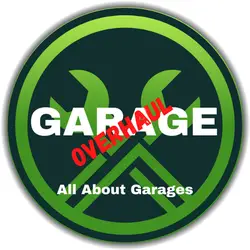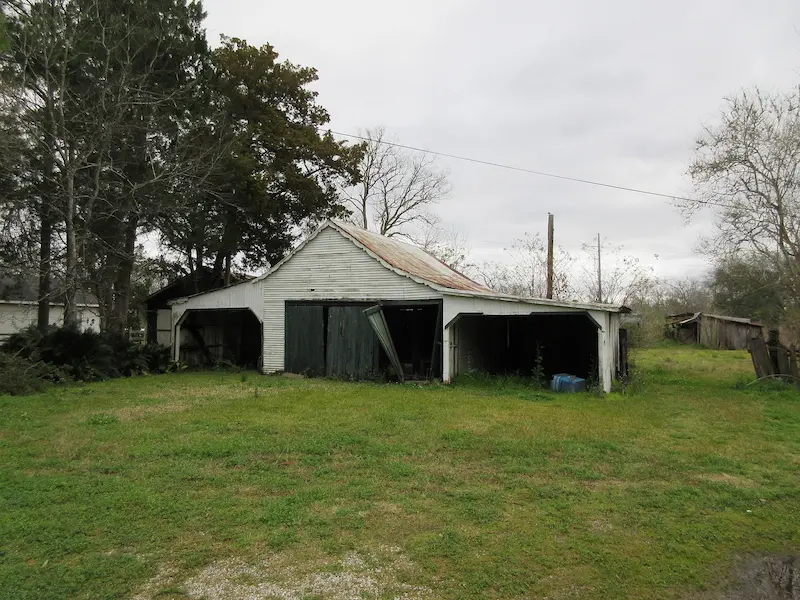Why Is It Called a Garage? (History and Other Info)
This post contains affiliate links.
We are used to parking our cars and storing things in the garage. We also use it to store things too. But to think of it, have you ever wondered how garages became what they are today? Why is a garage called a garage?
Garage originates from the French word garer, meaning ‘to shelter.’ The earliest garages evolved from carriage houses. As a result, garages are detached from the house. Garages were small but expanded to over 45% of house areas today.
In this article, Let’s explore garage history and some fun facts about the garage.
Who Invented the Garage?
The garage may not have an inventor. However, the standard for a garage was set by E. Keynes Purchase. He recommended a garage with a cement floor, electric lighting, and a pulley system.
Similar to how many things are invented, the garage was not invented out of the blue. It took some evolution over decades for garages to look like how they look today.
The garage is an integral part of the modern home, but it was not always so. The modern garage is only a little over one century old. Like all sorts of architecture, it has its own unique story.
Before cars, most homes had an outhouse for housing the horse-drawn carriage. These carriage houses were often simplistic structures with dirt floors. There were four walls and a swinging set of doors prone to falling off their hinges.
Sometimes the carriage was stored in a barn along with the horses. Sometimes the horse shared the carriage house with the carriage.
Either way, if you think about it, things were kind of chaotic and messy.
When cars came along, people did not take long to start looking for storage. This is because their cars need a proper place to keep them away from the elements.
Many older cars did not even have a roof. Hence, a shelter was important for a proud, new automobile owner.
At first, cars often went into the carriage house or barn along with the horse. This is because cars and horse-drawn carriages existed side-by-side for some time.
It took a couple of decades before horses were completely out-of-date as transport.
This combination was not very satisfactory for anyone – the horse, the car, or the owner. Many soon realized they needed a better storehouse to store their cars.
This gave birth to the garage. The word came about in 1912, derived from the French word garer, which means to shelter or protect.
However, garages were built randomly, depending on what the owner liked. It took someone by the name of E. Keynes Purchase to kind of ‘set a standard’ for how a garage or a motor house should look like.
He is an honorary architect with the Royal Automobile Club in the United Kingdom. He has also done extensive design work on garages.
E. Keynes Purchase wrote in The Car Illustrated in 1902 that garages should:
- Be built out of bricks
- Have a cement floor.
- There should also be an inspection pit
- Have good electric lighting
- Have a pulley system for removing parts of the car.
The latter was particularly important in the early days of garages and automobiles. This is because many car owners were mechanical and engineering enthusiasts.
When did Garages Become Common?
Garages have become common with the development of cars. However, earlier garages are for public use. For example, it is common to have a downtown garage in cities and towns for parking. It was only later that garages were built on private homes.
The first planned private garages appeared long before 1900. In fact, many private garages from before 1914 were pre-built. At the time, companies such as Boulton & Paul Ltd were popular garage builders.
One vital aspect of garages in those days was that they were built similarly to the house. Many also have designs that blend into their neighborhood. These are usually single garages built of timber, and few have survived.
However, most cars are parked in public parking garages in the early days. These public garages were similar to modern-day parking garages. These garages usually are smaller and single-story.
The U.S.’s first recorded public parking garage was built and opened in Boston on May 24, 1898. Similar garages also opened in the U.K. in 1900 and Germany in 1901.
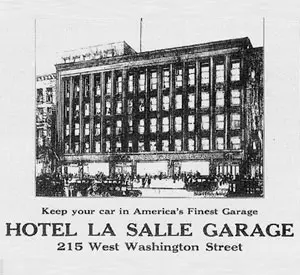
People would actually park their cars in these communal garages and then walk home. It is an inconvenience in some way since you cannot park your car right at your doorstep like today.
However, it is a trade-off many accept. This is because these parking garages usually have roofs and heating. Some even have guards to watch over the cars. Unlike today, the latter is important since cars were not roofed and not well secured.
You may be surprised to see this but remember that cars were a luxury object in the early days. Very few people could afford them. Plus, many outhouses are still used to keep carriages and horses, so there is no space for cars yet.
It took time before cars were popular enough to replace horse carriages. When this happened, the outhouse eventually became a private garage. People now park their cars inside instead of horses and carriages.
Who Invented the Upward-Acting Garage Door and Electric Opener?
C.G. Johnson from the Overhead Door Corporation invented the first upward-acting garage door in 1921. He later developed a motor for it as well, creating the first motor powered garage door opener.

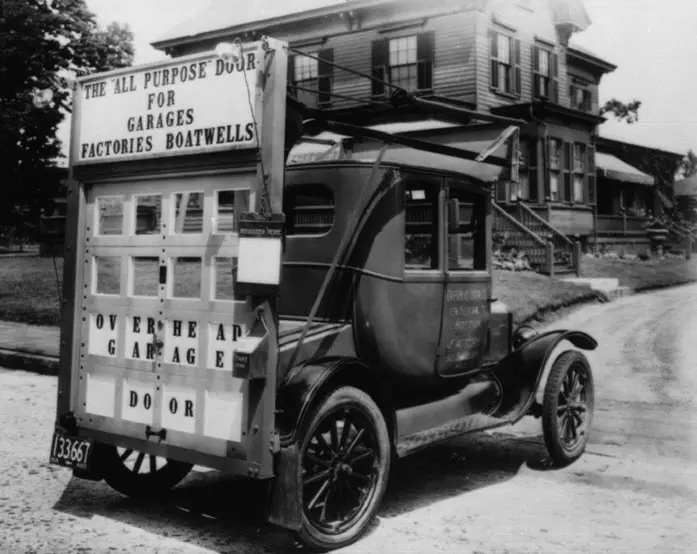
Many earliest examples of personal garages usually have a double door. These doors come with strap hinges and open outwards.
These doors suffered heavy wear and tear from regular opening and closing. They were almost inoperable when blocked by snow or mud.
It took until 1921 for C.G. Johnson from the Overhead Door Corporation to invent a solution. It comes with the first upward-acting garage door.
The door was manufactured with hinged panels that could bend as the door lifted. This was a significant advancement over the old carriage house doors. But, the door is heavy and may need some physical effort.
It took several years for C.G. Johnson to improve his design. He later added the first electric garage door opener to his garage door.
This brought power into the garage, along with lights. When the garage was no longer dark and dank, garages started getting more important and bigger.
People seem to have new ideas about how the garage could double up as a home workspace.
One problem with electric garage doors at this time is they do not have an emergency stop. This means the doors will not retract if they close onto something.
This is a tragic problem, as it has taken the lives of pets and, unfortunately, children too. Between 1974 and 1995, 85 children died from garage door accidents.
As a result, a national law was then passed. It requires that all overhead garage doors have photoelectric and pressure sensors. These sensors will make the door reopen if it encounters an obstacle while closing. As a result, accidental deaths involving garage doors have become rare.
Why Are Old Garages So Small?
Old garages were small since houses were small, and garages are usually built to follow the sizes of the houses. People also usually owned a single car in the olden days, which means a single garage is enough.
Older garages are usually small by modern standards. It was common to build a single garage. They are big enough to accommodate the car, leaving a little space for the owner to pinch in through the door.
By the 1960s, the average family could afford more than one car, so garages were extended. The average American garage grew to take up 45 percent of the entire home in this time.
This makes sense, as in the earlier days, Americans mostly live in homes much smaller than today. In 1940, average house sizes were about 1,669 square feet. That is small compared to today, where average house sizes are 2,422 square feet.
As a result, the garage size may also reflect the house size. Small house, small garage. Large house, large garage.
Why Were Garages Detached Historically?
Garages were first detached for both practical and social reasons. Many early garages were converted from carriage houses. As a result, these buildings were already detached and located in the yard’s backside.
Although these places become places to store cars, garages remain detached from the house. In fact, the early detached garages were also often accessed from a shared alley. These alleyways usually ran parallel to the houses’ streets.
This ensures that the garage does not interfere with the visual presentation of the house. The garage would also not disrupt the social importance of the house’s front.
At that time, most homes had a large front porch as a gathering place. It also becomes a point for social function with people on the footpath.
Are Garages Usually Insulated?
Garages are usually not insulated. This is because garages have traditionally been the place to store things, not to live in. As a result, little care is put into regulating the temperature. However, people spend more time in garages today, which means insulation is becoming more common.
In many cases, the walls of garages are usually not insulated. This is the norm unless the owner asks to have the garage insulated during construction.
As garages transformed into more than storage places, people started to put in insulation. The idea is to support the climate control systems, such as in a heated or cooled garage.
Insulation can help a garage stay warm during winter and cool during the summer months.
Insulation is also more common nowadays, as houses become more packed. Insulation helps to keep the garage sound inside and does not bother the neighbors. This may come in handy if you enjoy using tools to build something.
Insulations also can play health and safety functions. They seal off the home’s interior from car exhaust fumes and carbon monoxide. They also provide a fire-rated barrier to help stop the fire from spreading from the garage to the house.
Garage insulations can come in many types for the floor, ceiling, walls, and door. Garage insulations can also come in many types of material. Common examples include fiberglass, cellulose, radiant barriers, and foams.
READ MORE: Best Garage Door Insulation
Are Garages Usually Ventilated?
Often, car garages have ventilation. In fact, many locations have building codes that need car garages to have ventilation. These requirements come about for many reasons, such as for health and safety.
As a start, you may start your car in the garage. The exhaust may release harmful pollutants and gasses such as carbon monoxide. These gasses can be dangerous if they accumulate in a small, enclosed space such as a garage.
You may also engage in some projects using materials that emit odors and chemicals into the air. Often when concentrated enough in an enclosed space, they can be harmful. For example, solvents, paints, or chemical cleaners such as bleach or rubbing alcohol.
Proper ventilation can help prevent these gasses from building up. The garage is likely to be safer too.
At the basic level, garages usually have natural ventilation through windows or doors. Some underground or downtown garages may have mechanical ventilation systems installed. They help to control airflow and improve air quality.
Garage ventilation requirements differ by country, state, and municipality. In most areas, garage vents are not required by the building codes, and thus most garages are not vented.
Municipalities that need garage vents usually want them on the vehicle entry side. On top of that, the vents should be down low, toward the garage floor.
This is because fumes and vapors from other flammable materials are heavier than air. This means they sink toward the floor.
Having an open space closer to the floor helps them to escape the garage.
Are Garages Considered Habitable Spaces?
Garages are traditionally considered storage or working space. This means they are generally not considered a place to live in. However, as people start to work from home, many garages are converted into living spaces.
Garages are generally not built to the same terms and criteria as the home’s living spaces. Garages are often bare bones, with cement flooring, bare walls, and some windows.
You may not see many creature comforts inside. For example, insulation, carpeted floors, or climate control.
Instead of couches or dining tables, you get workbenches for work. You also get lots of shelving and cabinetry to store things as well.
READ MORE: Best Garage Cabinets
However, Remote work is becoming more popular recently. As a result, people started to convert their garages into home offices.
Some also enjoy the concept of man caves and turn to their garage and spec it up for ‘manly’ pleasures. Video game consoles, pool tables, and garage fridges for drinks start to make it into the garages.
As a result, people spend more time in garages, which means they also turn them into more habitable spaces. You start to see insulation, vinyl flooring, and climate control installed. Windows may be made bigger, too, for better ventilation.
But, converting a garage into a living space requires alterations and upgrades. These works also need to meet the local building code requirements.
Some include ensuring ventilation and building safety. There are also issues such as electricity, wiring, and plumbing works to look at.
Why are Garages Unfinished?
Garages are usually unfinished to allow you the opportunity to customize it, and turn it into exactly what you want. Builders also prefer to spend the budget on the interiors, such as kitchen, or flooring, to give you better value.
Houses are often sold with the insides done. The kitchen is usually pre-modeled, and the living spaces are well-sorted.
However, garages are often left bare and untouched. You tend to get a concrete floor, bare walls, and maybe an electric point. The doors may or may not have electric motors and springs.
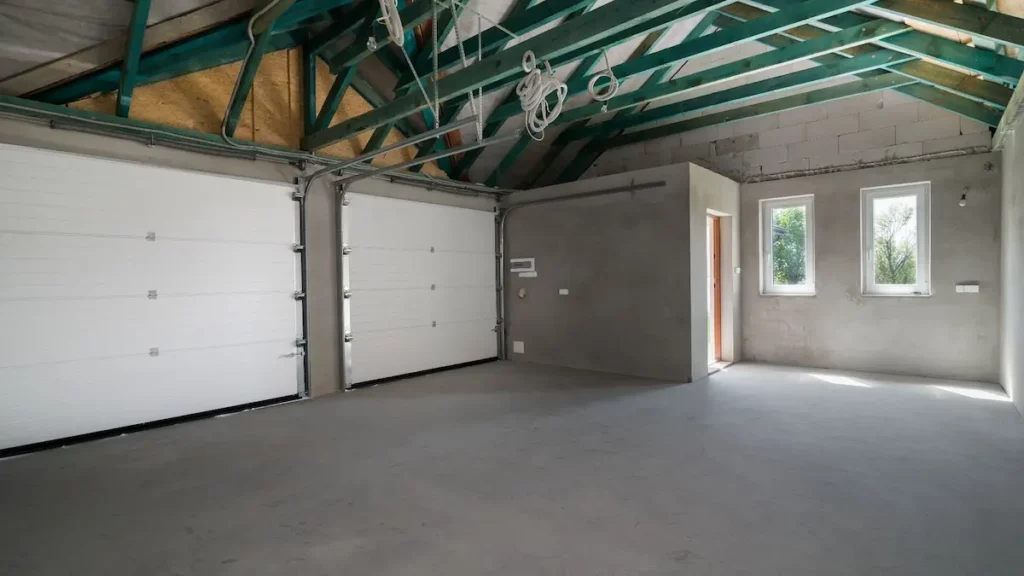
Most garages are left unfinished to save money when building a home. Builders can often provide better value to homebuyers by building the interior.
They noticed spending the budget on the kitchen, flooring, and roofing is a better idea. The garage? not so much.
Homebuilders also assume the garage will store vehicles, tools, and other stuff. As a result, most homeowners do not need them to be finished.
There is also another issue. Garages can be used in so many ways homebuilders think it may be better to leave them bare.
For example, suppose you enjoy wrenching on cars. In that case, you may want shelvings for parts, fluids, tools, and a lift for your car.
If you enjoy woodworking, you may want a huge workbench and cabinetry to keep your hand and power tools. Some guys enjoy turning their garage into a man cave with creature comforts.
On top of all this, there may also be traditional garage users. They just want their garage clean, barren, and boring to store things.
If homebuilders try to finish the insides of the garage, it may not be what you want. If they finish the walls and flooring for a man cave, you may find it hard to work on your cars. The nice flooring will be stained by car fluids and such.
You will have to, instead, tear out these finishings, and redo the garage into what you want. This is a waste of money, energy, and resources.
This made housebuilders leave the garage barren. As a result, you can immediately start to turn it into something you want.
What’s the Difference Between a Carport and a Garage?
Carports are a more open, less secure type of parking space for cars. Garages would be more enclosed, and able to provide better security and protection to your car.
In very basic terms, a garage is most often considered an enclosed building with a roof, walls, and doors.
A carport, by comparison, is usually considered a partially closed structure. It usually has a roof or other form of top covering and is open on two or more sides.
Carports are much easier to build. They are also cheaper, offering significant cost savings compared to a garage.
Being more open, carports do not provide the same protection from the elements. They are also not as safe as a garage, which can be locked and shielded from undesirable guests.
Entrepreneurship and Garages
Garages are the place where many innovations are developed. As a result, many of the world’s biggest companies also come from garages. Examples include Apple, Amazon, Google, and more.
Garages are where people tinker, build things, and do projects. As a result, many of the world’s best innovations come from garages.
In fact, many companies like Apple, Google, and Amazon actually started from a garage. These are some of the world’s greatest corporations.
Garages serve as a workplace for many. People also seem to focus better when working in the garage. This may help to generate ideas and has helped many people to innovate.
For example, Steve Wozniak. One of Apple’s earliest founders enjoys tinkering in his garage. He also developed the Apple II computer with Steve Jobs in a garage.
Google was also built in a garage, specifically in Susan Wojcicki’s house.
Garages also provide space for people to separate between work and living. This means garages are excellent for those working from home.
Garages have been transformed into studios, apartments, workspaces, and man caves. Future garages may also include more technology, such as electric vehicles. The future garages will reflect the modern human lifestyle as well.
How to Say Garage in Different Languages
Many of the world’s languages also base their word for garage on the French word garer. Architect Charles Harrison Townsend tried to propose an English term, ‘Motor House, ‘ in 1908, but it was unpopular.
| Language | Ways to say garage |
| Azerbaijani | qaraj |
| Albanian | garazh |
| Basque | garage |
| Bosnian | garaža |
| Bulgarian | гараж |
| Catalan | garatge |
| Corsican | garage |
| Croatian | garaža |
| Czech | garáž |
| Danish | garage |
| Dutch | garage |
| Esperanto | garaĝo |
| Estonian | garaaž |
| Filipino | garahe |
| French | garage |
| Frisian | garaazje |
| Galician | garaxe |
| German | Garage |
| Greek | γκαράζ |
| Hawaiian | kaʻahi |
| Hungarian | garázs |
| Icelandic | bílskúr |
| Indonesian | garasi |
| Italian | box auto |
| Latin | garage |
| Latvian | garāža |
| Lithuanian | garažas |
| Macedonian | Гаража |
| Malagasy | garazy |
| Malay | garaj |
| Maltese | garaxx |
| Norwegian | garasje |
| Polish | garaż |
| Portuguese | garagem |
| Romanian | garaj |
| Russian | гараж |
| Serbian | гаража |
| Slovak | garáž |
| Slovenian | garaža |
| Spanish | garaje |
| Swedish | garage |
| Turkish | garaj |
| Ukrainian | гараж |
| Uzbek | garaj |
| Yiddish | garage |
| Hebrew | מוסך |
In 1908 the architect Charles Harrison Townsend commented in The Builder magazine. He wrote:
“for the home of the car, we very largely use the French word ‘garage,’ alternatively with what I think is the more desirable English equivalent of ‘motor house.'”
However, his proposal was not as popular, and the word garage remains in English today.
